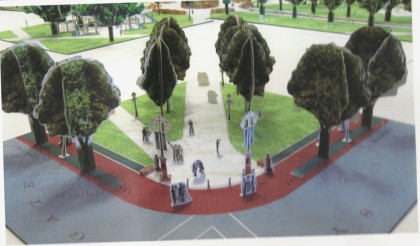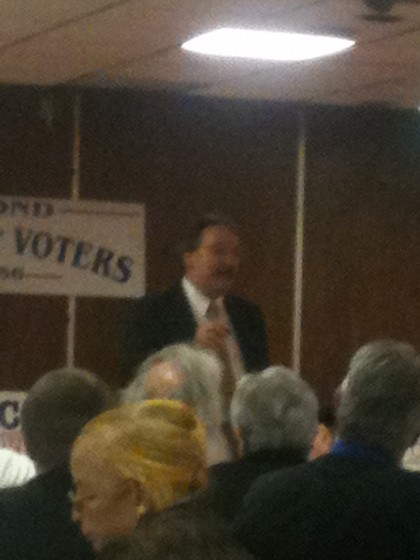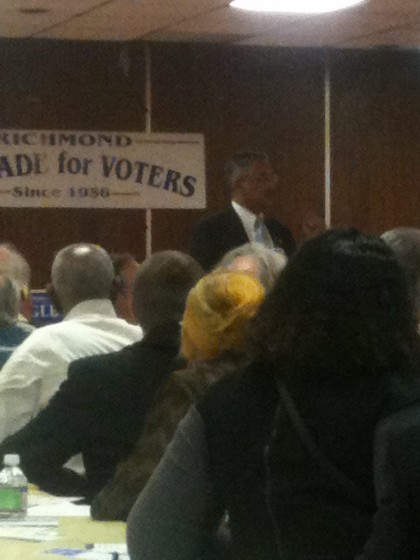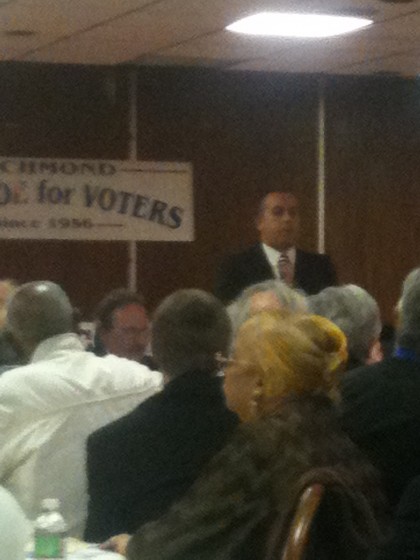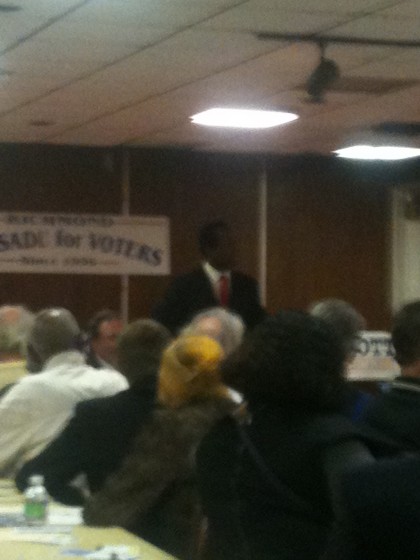From the City’s Department of Community Development newsletter:
The city of Richmond was honored recently with two important awards in recognition of its commitment to and achievements in climate protection and sustainability.
The city received a Silver Award in the 2010 Virginia Municipal League (VML) Green Government Challengeand recognized for completing its Baseline Greenhouse Gas Emissions Inventory, which completes Milestone One of a Five Milestone process.
The Green Government Challenge is a friendly competition among local governments to encourage the implementation of specific environmental policies and practical actions that reduce carbon emissions.
Richmond earned its award by (1) hiring its’ first Energy Manager to develop a comprehensive Energy Management Program that includes improving the energy performance of all city agencies; (2) retrofitting traffic signals with LED lights at 220 intersections, The Department of Public Works will convert 220 intersections by the end of 2010 that will save more than $108,000 in annual energy costs and, (3) the city also created the first two Green Alleys in the city to reduce stormwater pollution by using permeable pavers which allow water to soak through rather than run off.
Check out Chicago’s Green Alley program by clicking here. I am not sure where Oregon Hill alleys fall in with the City of Richmond’s Green Alley initiative, but I am looking forward to seeing more permeable pavers.
It’s important to note that while some citizens may not be happy with the stormwater utility fees, the City of Richmond is LEADING the counties in addressing the stormwater problem and deserves praise for doing so. Let’s see if the counties rise to the challenge like the City has, for they will need to deal with their own stormwater sooner than later.
I was reminded of this when I attended a Virginia Department of Environmental Quality James River TDML meeting last night:
TMDL Background:
Virginia agencies developed a study to identify sources of the bacterial contamination in the waters of the James River and it’s tributaries in the following jurisdictions:
Stream
County/City
Length (mi.)
Impairment
Bernards Creek
Chesterfield, Powhatan
6.95
Bacteria
(Primary Contact Use)
Powhite Creek
Chesterfield, Richmond City
8.13
Reedy Creek
Richmond City
3.69
James River
Richmond City
2.99
Gillie Creek
Richmond City, Henrico
5.75
Almond Creek
Henrico
2.08
Goode Creek
Richmond City
1.22
Falling Creek
Chesterfield
3.10
No Name Creek
Chesterfield
2.07
James River
Chesterfield, Henrico, Richmond City
6.75
These streams are impaired for failure to meet the Primary Contact (Recreational) designated use due to bacteria standard violations. The study reported sources of bacterial contamination and recommended total maximum daily loads, or TMDLs, for the impaired waters. A TMDL is the total amount of a pollutant a water body can contain and still meet water quality standards. To restore water quality, bacterial levels have to be reduced to the TMDL amount. The report, which was submitted to EPA on 9/30/10, is available on the DEQ website: http://www.deq.virginia.gov/tmdl/drftmdls/jamesg3.pdf. A TMDL study is meant to address “what” the problem is and how much of the pollutant must be reduced to meet water quality standards. The TMDL is then followed by Implementation Planning, which addresses “how” we meet the reductions identified in the TMDL study in order to meet water quality standards.



